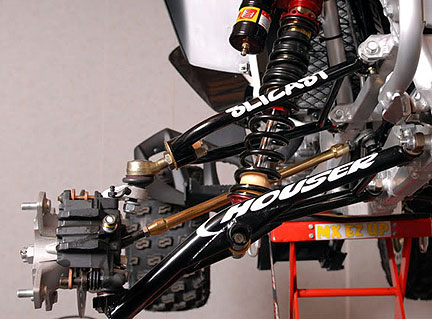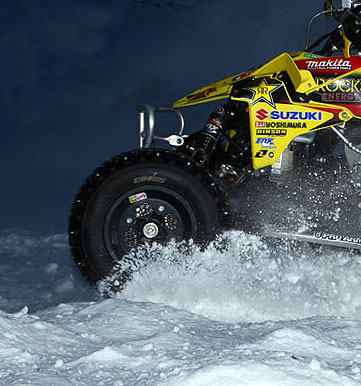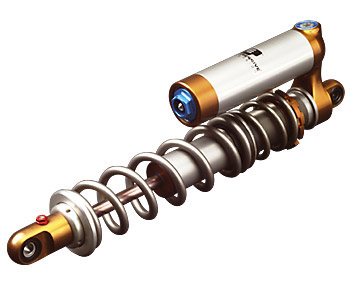Tech Center – What You Need to Know About Stock Suspension

Unlocking the Secrets to your ATVs Boingers
by Jason Giacchino
Most riders have some understanding of the fairly complex systems that connect their ATV’s wheels with the frame to keep bumps, dips and trail clutter from being transferred directly to the body.
However, before attempting to fine-tune one’s suspension, there are some considerations that are often overlooked. The following guide aims to clarify and rectify many common suspension misconceptions that can result in buying pricey aftermarket units when not necessary.
Don’t Make a Move
Believe it or not, suspension has a period of break in – just like your quad’s engine and brakes. If you’ve purchased a new ATV, don’t start messing with settings until at least 10-hours of operation. This will allow the seals and internal chambers of the suspension to break in. Seals are particularly sticky early on and can result in stiffer-than-usual damping as well as the sensation of slow rebound. Your suspension could very well be putting out the type of smoothness and trail compliance you seek without having to mess with anything.
Opposite End of the Spectrum
Like any components that move, eventually, suspension can and will wear out. Worn or damaged internals can severely inhibit operation. Major components such as seals and shafts can be damaged after repeated use, but even under normal circumstances, gas and oil can leak out. Even if levels are still up there, shock oil degrades over time and should be changed for maximum performance.
Not all suspension is rebuildable however. Sealed units, commonly found on entry-level and off-brand ATVs are designed to be replaced once they outlive their service life.

Temperature Dependent
Remember that the temperature has an effect on the fluids within your ATV, and this includes shock oil. The colder the temp, the thicker the oil. Almost like when your suspension is new, operation in cooler climates can make suspension action feel stiffer and a bit slower.

Proper Diagnostics
Remember there is more to your ATV’s proper handling than the suspension. Other components can be at fault when your machine is clunking or feels sloppy. Among these are your bushings, bearings, and linkage. Even tire pressure changes can result in handling snafus.
Valve Stems
Years ago the presence of a Schrader air valve (still the case today with mountain bike suspension) indicated a spot for tuners to add or remove air pressure using a pump. However, today’s ATV suspension contains these valves specifically for the purpose of a factory nitrogen charge. Removing this nitrogen reserve will compromise your suspension’s performance by allowing air bubbles to form within the shock oil. Additionally, adding air to the valve will also only weaken the nitrogen content and hence allow for shock oil frothing.

Should your nitrogen level weep over time, be sure to have a dealer/qualified shop recharge it for you as it is PSI specific and too much can be even more damaging to seals than too little.
Click the following link to join the aftermarket shock conversation at ATV Connection’s Forums:
http://forums.atvconnection.com/drivetrain-suspension-tires/338820-what-you-need-know-about-stock-suspension.html#post3050506
